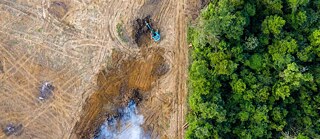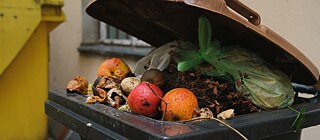Urban Water Management “Water to Go” and a Floating Farm
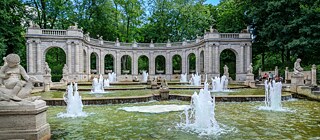
Cities are growing around the world, and the need for more drinking water is growing right along with them. Here are a few ideas for making water management more sustainable.
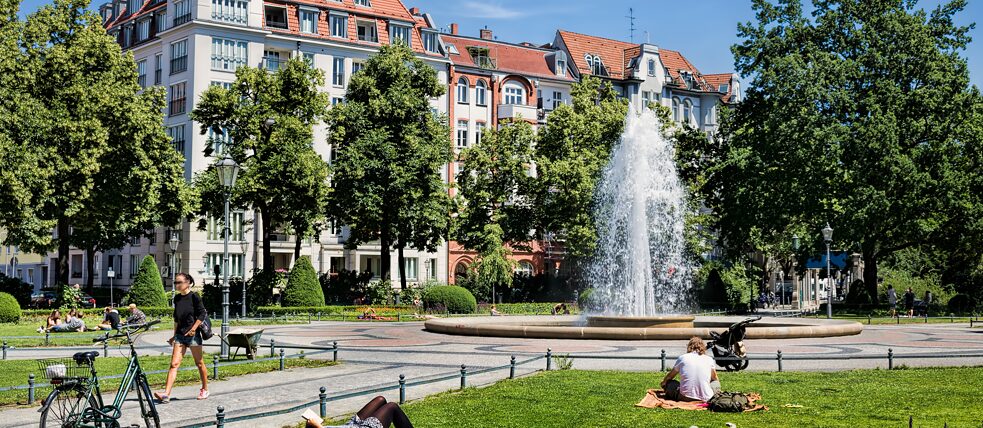 Free drinking water bubbles up from Berlin’s 132 public fountains. Around 90 percent of all drinking water is sourced inside the city limits.
| Photo (detail): © Adobe
Free drinking water bubbles up from Berlin’s 132 public fountains. Around 90 percent of all drinking water is sourced inside the city limits.
| Photo (detail): © Adobe
Berlin, Germany
Berlin’s water cycle is unparalleled in Germany: the city sources 90 percent of all drinking water from inside the metropolitan area. This not only includes everything that flows from a tap, but also the water that bubbles out of the 132 free public “water to go” fountains. Berlin’s clever water management system depends on a network of 154 pumping stations, around 9,600 kilometres of sewage lines and roughly 1,170 kilometres of pressurized water pipes. The city has developed a number of best practices, such as an “offshore” mixed water storage unit in the Spree River, retention ground filters for rainwater treatment, and grey water recycling and rainwater harvesting systems in many homes and offices. The largest publically owned company in Germany, Berliner Wasserbetriebe even extracts an especially water-friendly, recycled fertilizer from sewage sludge called “Berliner Pflanze” (Berlin Plant) which also helps cut down on algae growth in Berlin’s bodies of water.
 “Garden City” Singapore: Urban dwellers enjoy relaxing outdoors among the verdant plant life and many city parks.
| Photo (detail): © Adobe/Angelika Bentin
“Garden City” Singapore: Urban dwellers enjoy relaxing outdoors among the verdant plant life and many city parks.
| Photo (detail): © Adobe/Angelika Bentin
Singapore
Singapore is a traditionally green city. Since declaring independence in 1965, the government has focused on turning the city-state into a “Garden City”. Rich swathes of green clean the air and Singapore’s water management serves as a model for the rest of the world. The city continually expanded its water processing infrastructure to around 8,000 kilometres of waterlines and 17 water reservoirs today. Fifty years ago, this city of 5 million was largely dependent on neighbouring Malaysia for its water supply. Today, Singapore generates its own drinking water using three methods: wastewater treatment, rainwater harvesting systems, and seawater desalinization. Rainwater is filtered via plants and soil without the addition of chemicals, which supports biodiversity and benefits the city’s parks, green oases where urban dwellers can relax and commune with nature.
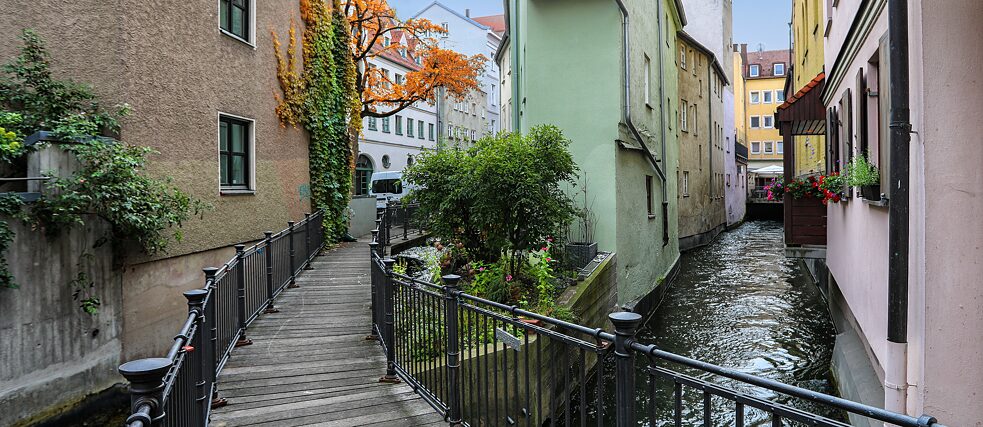 Augsburg‘s many canals provide renewable energy and the multiple small bridges add to the charm of the historic city centre.
| Photo (detail): © Adobe
Augsburg‘s many canals provide renewable energy and the multiple small bridges add to the charm of the historic city centre.
| Photo (detail): © Adobe
Augsburg, Germany
In 2019, Augsburg’s historical water management system was awarded UNESCO world heritage status. The city’s exceptional facilities for using natural waterways and supplying drinking water were established from the 15th to early 20th centuries, including Germany’s oldest water tower and water processing plant (1901/1902). The historical network of canals was built when the textile industry flourished in Augsburg and remains intact today, having survived the decline of the industry in the 20th century. Augsburg is and always has been a water city. Augsburg’s many canals supply renewable energy. The volume flow is easy to regulate, making them ideal for generating hydrodynamic power. And all the running water and small bridges give the historical city centre its charm and appeal.
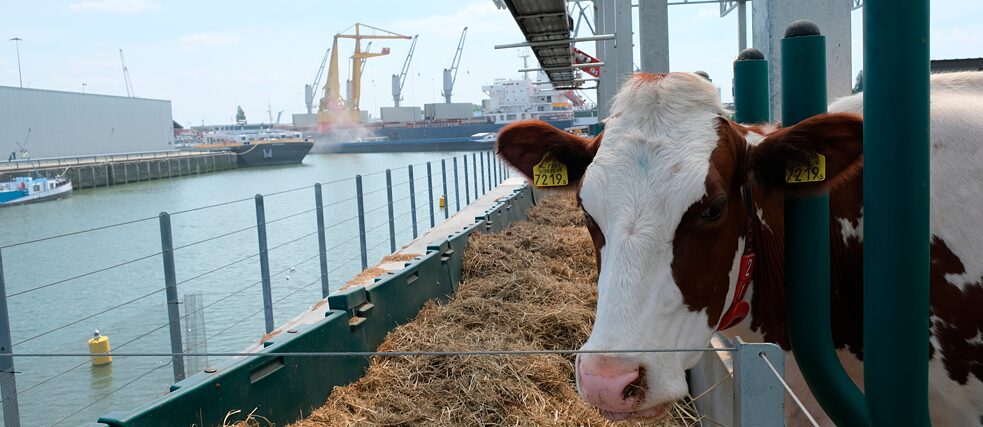 Thirty-five cows live in a pen on the water on Rotterdam‘s “Floating Farm”.
| Photo (detail): © picture alliance/Mike Corder/AP Photo
Thirty-five cows live in a pen on the water on Rotterdam‘s “Floating Farm”.
| Photo (detail): © picture alliance/Mike Corder/AP Photo
Rotterdam, Netherlands
Too much water can be just as problematic as too little. This is the issue facing the Dutch city of Rotterdam, much of which is up to seven metres below sea level. The sea-level rise caused by climate change is palpable here. Rotterdam has an impressive series of dykes and the largest storm surge barrier in the world, the Maeslantkering, to protect the city. Rooftop gardens absorb rainwater, such as the 1,000 square metre DakAkker Rooftop Farm that captures roughly 60 litres of water per square meter, provides natural cooling and is used to grow food. The approach taken by Rotterdam’s “Floating Farm” is even more unusual. A floating pen that 35 cows currently call home, the Floating Farm collects and filters rainwater for the cows to drink and uses electricity from a floating solar power plant.
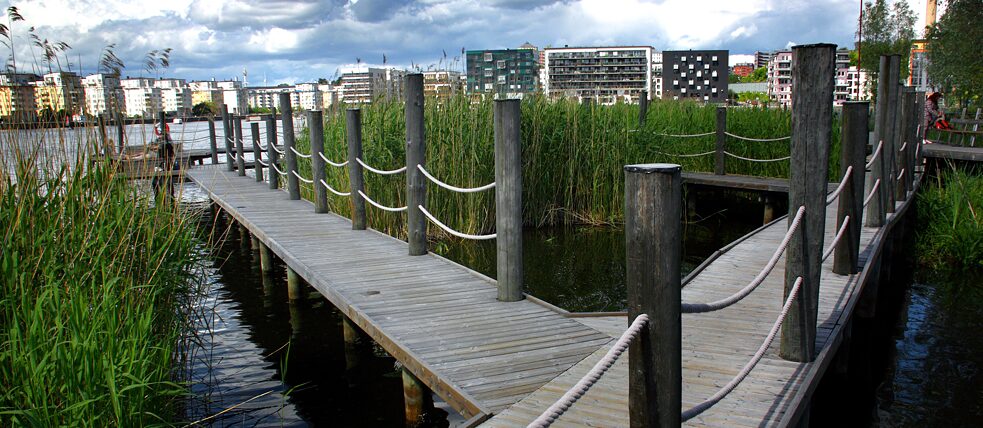 Clean, natural parks and close proximity to the water shape life in Sweden’s Hammarby Sjöstad.
| Photo (detail): © Adobe
Clean, natural parks and close proximity to the water shape life in Sweden’s Hammarby Sjöstad.
| Photo (detail): © Adobe
Hammarby Sjöstad, Sweden
Still a polluted industrial area in 1990s, Hammarby Sjöstad set a course for self-improvement with its 2004 bid to become the Olympic Village. While this town just a few kilometres south of Stockholm’s city centre had to let go of its Olympic dreams, it has since been transformed into an ecological frontrunner and model. Clean, natural parks and a close proximity to water shapes the lives of Hammarby Sjöstad’s around 30,000 inhabitants. Water management is pioneering here too, where a treatment plant processes the sewage of around 900,000 residents of Stockholm. The waste heat is used to warm buildings, and the cold water cools down supermarket warehouses. The sewage sludge left behind is mixed with organic waste and used to generate environmentally friendly biogas.
 The Gihon Spring at the foot of Temple Mount provided Jerusalem with drinking water for centuries. Today the ancient tunnel system and pond of Siloah are part of a unique archaeological park.
| Photo (detail): © Adobe
The Gihon Spring at the foot of Temple Mount provided Jerusalem with drinking water for centuries. Today the ancient tunnel system and pond of Siloah are part of a unique archaeological park.
| Photo (detail): © Adobe
Jerusalem, Israel
For decades the lack of water in Israel has led to conflict, and the problem has only gotten worse in recent years as periods of drought have grown longer and more frequent. This water crisis has driven creative solutions. Today computers control the drip irrigation systems that water Israel’s fields. Desalinization plants use reverse osmosis to turn sea water into enough drinking water to cover half the country’s needs. Israel also leads the way in waste water processing, re-using around 75 percent of all wastewater, primarily in agriculture. Around 15 percent of all Israelis, roughly one million people, live in Jerusalem where the Gihon Spring in the Kidron Valley at the foot of Temple Mount provided fresh water for centuries. Today the ancient tunnel systems and the pond of Siloah are part of a unique archaeological park. The environmental prize-winning Hagihon water company supplies the city’s water, conserves water and promotes awareness of water quality, such as regular maintenance of the ubiquitous rooftop water tanks.
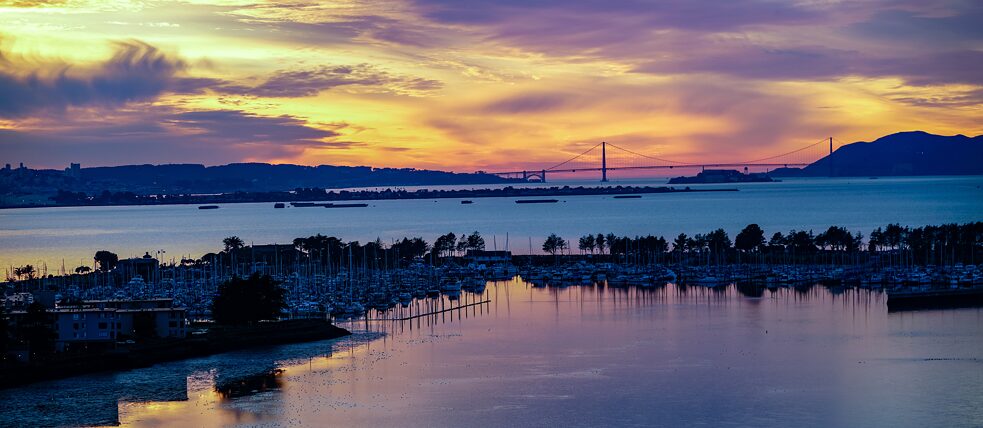 View of the Golden Gate Bridge from Emeryville: This small city on the San Francisco Bay is known for its exceptional approach to water management.
| Photo (detail): © Adobe
View of the Golden Gate Bridge from Emeryville: This small city on the San Francisco Bay is known for its exceptional approach to water management.
| Photo (detail): © Adobe
Emeryville, USA
This small town on the San Francisco Bay is most famous for being home to the Pixar film company. Located in California, long a pioneer in environmental conservation and renewable energies, Emeryville has also been attracting attention for its sustainable water management. The city uses cisterns and water tanks to collect rain water, and built large parking garages with green roofs to get cars off the street. Less on-street parking means less asphalt and run-off. Along with large-scale awareness-raising campaigns on issues like waste water and water conservation, the residents of Emeryville also enjoy the benefits of a unique agricultural program. Preventing waste and reducing the amount of fertilizer used are all part of preserving the Bay’s cultivated landscape, increasing the quality of life and promoting new biodiversity along the San Francisco Bay.
